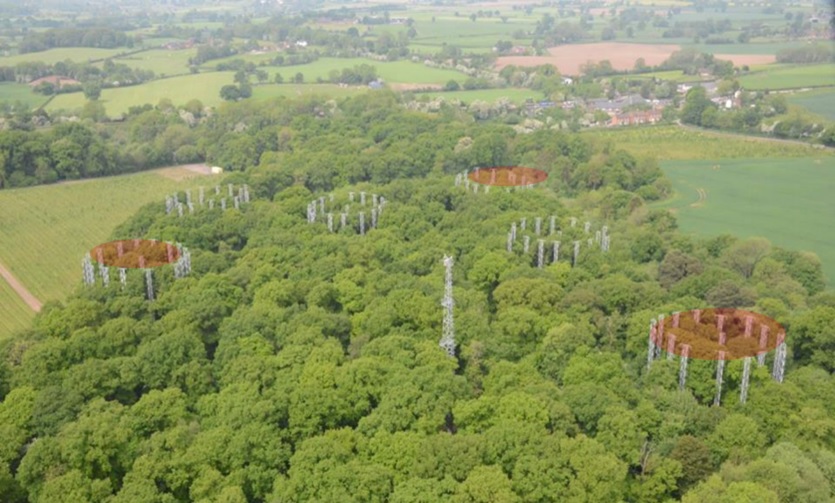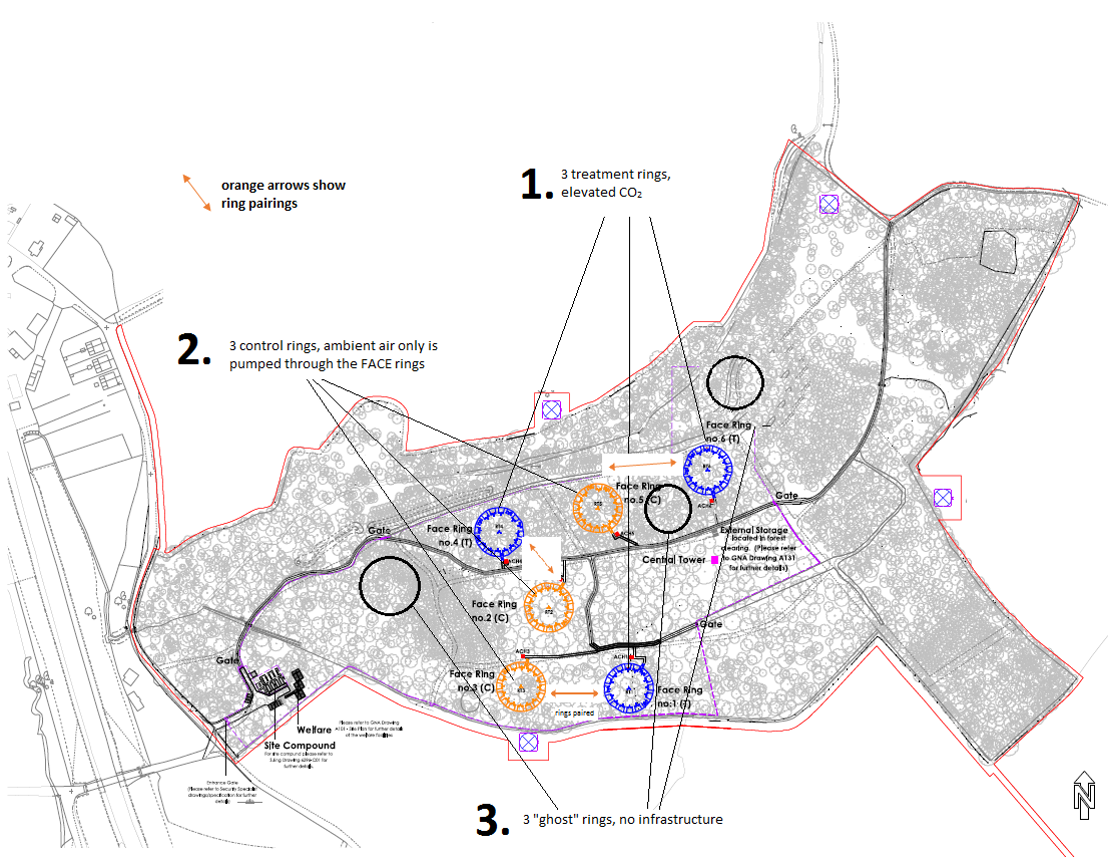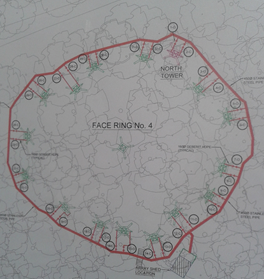
Ensuring control
Extract from Characteristics of free air carbon dioxide enrichment of a northern temperate mature forest"
"FACE facilities have a simple scientific aim—that is, to subject ecosystem patches to consistent elevated [eCO2]—but are complicated to engineer. In order to meet the science aim without altering other environmental parameters, the CO2 fumigation must be accomplished using infrastructure that minimally influences canopy structure, environmental aerodynamics and microclimate. BIFoR FACE consists of nine experimental patches of forest, three infrastructure arrays dosing air +CO2, three infrastructure arrays dosing with ambient air only and three noninfrastructure patches. Fumigation of 30 m diameter patches is accomplished using approximately circular arrays of 16 free‐standing lattice towers, supporting perforated pipes from which premixed air/CO2 is released from the upwind quadrant.
The operating target is an enhancement of [CO2] of +150 µmol/mol (150 parts per million by volume) above ambient at the top of the canopy at the centre of each treatment array. Daily fumigation times, on in the morning and off in the evening, {are}determined by solar elevation. "
(3, 3, 2) design
There are three “treatment” plots (highlighted in red in image above), receiving elevated CO2. These are matched with three “control” plots, which are identical in every way except that ambient air is used rather than air enriched in CO2. A further level of control is provided by three completely undisturbed plots to which power and data are provided (sometimes referred to as "Ghost" arrays). Each plot has internal splitting by tree species and canopy – especially splitting into oak upper canopy and hazel coppice layer – giving a (3, 3, 2) experimental design for most studies. More detailed information can be found in our academic paper "Characteristics of Free Air Carbon Dioxide Enrichment of a Northern Temperate Mature Forest' and our first substantive research paper "Is photosynthetic enhancement sustained through three years of elevated CO2 exposure in 175-year old Quercus robur?"

Each array whilst on the plan looks like a perfect circle, in reality is not, as the masts have been carefully inserted into the woodland (see below).

Below are two short extracts from a 9 minute video tour of the FACE Facility, They include details on the how the CO2 is delivered to each FACE array. The full video and more videos of how the FACE arrays were installed are available on our YouTube Channel
CO2 storage explained by Nick Harper and Rick Thomas
CO2 delivery to FACE arrays explained by Peter Miles and Rick Thomas